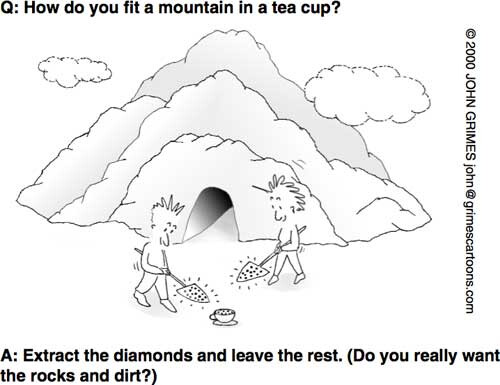丁宇 | DING Yu
Notes of "Zen of Palm" - 4 Design Practice (II)
Pragmatic Innovation: get rid of everything else
On page 14 it says:
- Identify the problems
- Find the simplest solution to each problem
- Get rid of everything else
In product design, it’s a typical approach to extract requirements from problems, and design features from requirements. Nevertheless, it’s the third statement that gets my attention: “Get rid of everything else”. Although it’s extremely hard to define what are the core requirements and what are not, it’s especially important and commendable, to follow this statement in the moments of decision making, and to make things that way, in practice, accordingly.
Determining the Need
Well, how do we determine the need? “Zen of Palm” doesn’t, because it is impossible to give a complete answer, since this topic is far beyond the scope of the book. The book has just introduced a few general methods (for example, ask more questions for vague answers), which have been discussed throughly in my series articles “Desperate Moderators” (in Chinese) which focuses on interview techniques.
The 80/20 Rule
When we have found 100 requirements, according to “Less is better” and “Get rid of everything else”, how do we determine the core need?
To be honest, this is very hard. We can compare this with the paradox of the heap in philosophy:
when one considers a heap of sand, from which grains are individually removed. Is it still a heap when only one grain remains? If not, when did it change from a heap to a non-heap?
Palm suggests an “80/20 Rule” to this kind of question; the problem that users spend 80% of their time to solve, is the core need. In the mean time, the rest 20% should be ignored directly.
For example, pressing the Date Book button on a Palm device will take you to the current date. Because 80% of the time users want to see the arrangements of today. Again, pressing and holding the Address Book button means beaming someone’s business card. It sounds odd, but from the research the Palm OS designers found that 80% of the time infrared (IR) was used to send business cards.
Solutions, not features
This statement is the essence from the essence! I believe everyone of us has experienced or witnessed this. An application starts to become popular from solving a small but focused problem, to integrate a bunch of features that you never use (or even know), to be abandoned by the users. The reason for it is, that the designers have ignored their users’ needs, and made features that are not related to the needs.
Therefore, it’s extremely important to do user research. Only by doing this, can you find the real problems that users are trying to solve, instead of the ones that you assume.
Common practices
Palm has listed a few common design practices. See literal can know, I just cite them here:
- Reduce the step count for common tasks
- Conceal risky functions
- Include power features discreetly
- Intuitive
- Easy to remember
My experience: the calendar design on iOS and PalmOS
I have been playing iPod Touch recently. Apple is well known for its great design, but comparing with Palm, Apple seems do a worse job in simplicity and immediateness. A fun example is the different calendar designs on these two platforms.
On iOS, creating a new event needs: 1) click the “+” button on the top right corner; 2) Input Title, set a Time; 3) click “Done”. The procedure takes 6 taps, 4 user interface transitions.
While on PalmOS, there is one, and only one, thing you do: tap on a time slot and input. That’s it! No “Done”, user interface transitions or whatsoever. PalmOS saves everything as you are typing. As shown below:


From metaphors point of view, Palm’s design is much better. It derives from what people do in the real world. Palm also adds a “New” button to the interface, allowing users to use the application in a “traditional” way.
Moreover, they both have advanced features, like “Repeat an Event” or “Set an Alarm”. As always, these features look gorgeous on iOS, but behave quite efficient on PalmOS. So to speak, PalmOS has made simplicity, immediateness, and efficiency of handheld devices to an unprecedented height. This specific characteristic of PalmOS, which seems to have the same origin as “Palm Powered handhelds can be used anywhere, anytime”, is the most factor to its users.
Solution to Riddle 2
-
jojo @ 2012-11-12 11:50:04 +0800:
hi,buddy.
After the new edition of blog is released, i seldom come to read your article. i feel very fortunate i learn English major so that i could understand your article with less barrier. Good article, i wondered if your page visitors became less than before.
Internationalization is good. however, oh Jesus, why do i need to read Chinese blog in English. Misarable thing.
Oh, by the way, can i only input Name works out as i submit comment? It's complicate to input name and email,and then content.
--JoJo
